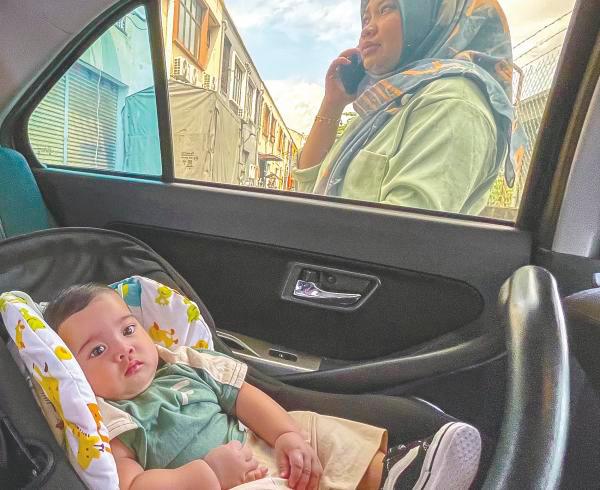KUALA LUMPUR: Incidents of children being left unattended in cars, often resulting in fatal outcomes, have drawn national concern and highlighted the need for effective preventive measures.
In the most recent case on Feb 1, a five-year-old girl died after being found unconscious in her mother’s car at the Shah Alam Hospital parking area, where she had been left for four hours.
In October last year, an eight-month-old infant was found dead after she was left in her mother’s car for almost 10 hours at a hospital parking area in Cheras.
In a third case the same month, a 16-month-old toddler died after being found unconscious in a car at a public university in Kuala Nerus, Terengganu.
To curb the issue, the Malaysian Institute of Road Safety Research (Miros) has developed a prototype of the Children in Vehicle Tracking and Alerting System (MyCINTA) to prevent such tragedies.
Its project leader Mohd Khairul Alhapiz Ibrahim said: “The causes of children left behind in vehicles are complex and influenced by human factors. Therefore, the system uses motion and sound sensors to detect a child’s presence when the engine is switched off.
“This alerts the driver and emergency contacts via phone call and message, which includes the vehicle’s coordinates linked to Google Maps. MyCINTA also initiates emergency measures by lowering the vehicle windows for air circulation, activating hazard lights and sounding the horn to attract attention.”
Additionally, he said it displays text-based warnings like “Danger” or “Help” on the windscreen using a dot matrix LED module.
“Laboratory tests confirm the system’s high operational consistency, effective location tracking, and rapid response, lowering windows within 45 seconds and fully activating within three minutes. The system has been evaluated and has demonstrated its functionality in real-world conditions, which shows strong market potential,” he said.
Mohd Khairul said Miros is seeking industry support to help advance the system. Its plans for 2024 and 2025 are to increase MyCINTA’s capabilities in terms of hardware and programming.
Universiti Teknologi Mara social and policy studies Prof Dr Yarina Ahmad said the system has the potential to be highly effective in preventing similar incidents.
“To evaluate its effectiveness over time, we need to monitor the metrics such as a reduction in reported cases of forgotten children in cars, user satisfaction ratings, the response time of alerts, and the system’s false positive and negative rates.”
As the system’s design is refined, Yarina expects that it would prevent further tragedies and ensure the safety of children in vehicles across the country.
While the system has to be installed by car manufacturers, Yarina said integrating it into new car models during production would ensure it works seamlessly with the vehicle’s existing safety and electronic systems.
“An after-market approach would require the system to be easily installed and compatible with various car models to encourage widespread adoption.”
Yarina said car dealerships and service centres could also offer the system as an optional add-on for customers, providing a convenient way for vehicle owners to upgrade their rides with the latest safety technology.
As automotive technology moves towards greater automation and connectivity, Yarina said systems like MyCINTA should be integrated with in-car artificial intelligence assistants, advanced driver-assistance systems, and smart city infrastructure to create a holistic safety environment.
“These technologies have the potential to transform not just child safety in cars but also overall vehicle safety standards, reducing accidents and improving emergency response systems.”
Yarina said government incentives or regulations could encourage the installation of child safety alert systems by providing subsidies, tax relief, or making it a legal requirement in certain categories of vehicles to instal the system.
“Ensuring standardisation, affordability, user-friendliness and regulatory compliance will be crucial to achieving its widespread adoption.”









